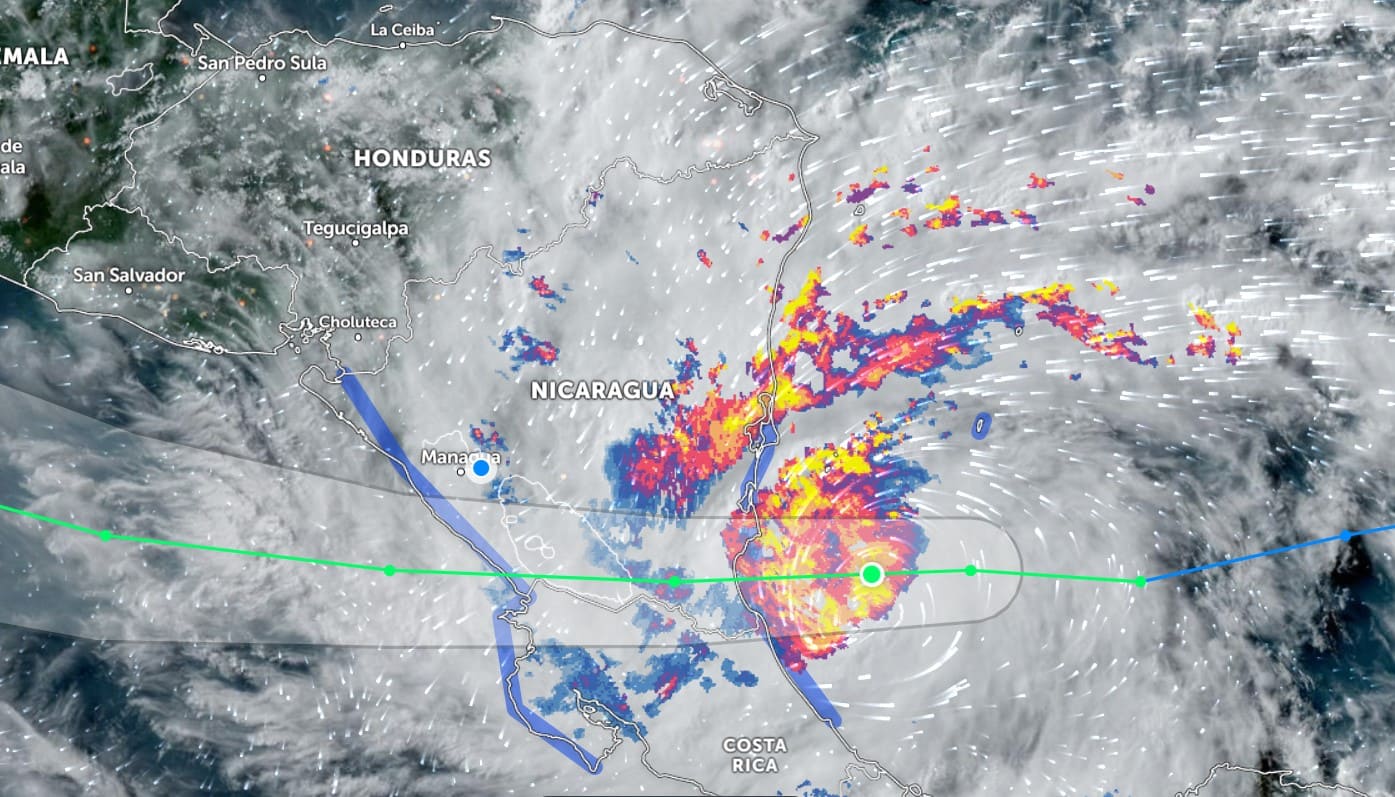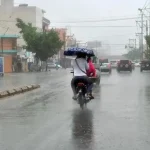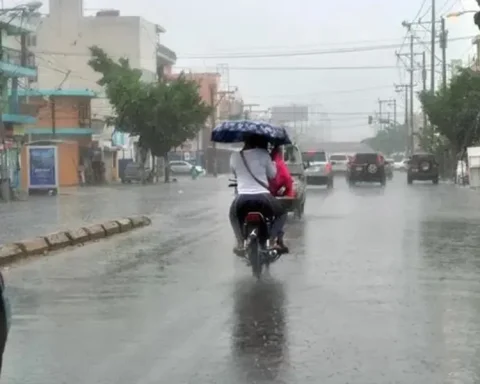Daniel Ortega’s regime decreed a green and yellow alert this Friday throughout Nicaragua, before the entry in the next of the tropical storm Bonnie, which would be causing heavy rains mainly in the South Caribbean area.
“In compliance with the plans, families are being evacuated throughout the country, and this noon (Friday, July 1), in compliance with the plans, Commander (Daniel) Ortega has ordered Sinapred, who in turn has requested all the information to Ineter, the declaration of a green alert and a yellow alert throughout the national territory,” Murillo detailed through the official media.
Bonnie, the second tropical storm this year in the Atlantic, is approaching the coast of Central America this Friday and is expected to dump heavy rains and cause flash floods and mudslides in Nicaragua and Costa Rica, where it will arrive tonight.
In a bulletin issued this afternoon, the US National Hurricane Center (NHC) indicated that the system, which began its path in the southern part of the Windward Islands and continued through the Caribbean near the coasts of Venezuela and Colombia, is located about 150 miles (240 km) east-southeast of Bluefields.
Bonnie continues to maintain maximum sustained winds of 65 km/h and is moving rapidly west with a forward speed of 31 km/h.
According to the trajectory predicted by the NHC, based in Miami (Florida), the meteorological phenomenon will move today through the southwestern Caribbean Sea and “will cross the south of Nicaragua or the north of Costa Rica tonight”, to emerge over the Eastern Pacific Ocean on Saturday.
It will then move offshore but parallel to the coasts of El Salvador, Guatemala and southern Mexico from Saturday to Monday with possibly stronger winds.
permanent surveillance
There are several warnings and surveillance orders for the passage of this system for areas of Nicaragua, Costa Rica and the Colombian island of San Andrés.
The most important is a hurricane watch (passage of the system in 12 to 24 hours), which covers from the border of Nicaragua and Costa Rica to the Pearl Lagoon, in the first of the two countries.
The NHC recommends that you track the progress of this system along the Caribbean and Pacific coasts of Nicaragua and Costa Rica, as well as the Pacific coasts of El Salvador, Guatemala, and southern Mexico.
It can also produce a storm surge, with the sea rising up to almost a meter above normal tide levels in the area where it makes landfall.
So far in the current hurricane season in the Atlantic, which began on June 1 and, according to meteorological services, is going to be more active than normal, there has also been another named storm, Alex, which formed on June 5 near the Yucatan Peninsula with the remnants of Hurricane Agatha, the first formed this year in the Pacific area.
Alex caused rains in the Yucatan, western Cuba and southern Florida.
Evacuations Costa Rica
Costa Rican authorities reported that at least 3,100 people have been evacuated and there are another 2,400 in the evacuation process, as a preventive measure before the arrival, in the next few hours, of tropical storm Bonnie.
The president of the National Emergency Commission (CNE), Alejandro Picado, said at a press conference that the people who are being evacuated live in communities in the Caribbean and the northern zone of Costa Rica that are prone to flooding and where the storm is expected to pass through. .
Picado explained that the entire north of the country, bordering Nicaragua, is under red alert and the rest of the country is under orange alert, while local emergency committees have 200 sites ready to use as shelters and warehouses have been stocked with the CNE with food and implements.
On red alert are the cantons (municipalities) of Liberia, La Cruz, Los Chiles, Guatuso, Upala, San Carlos, Río Cuarto, Sarapiquí, in the north of the country, as well as Guácimo, Pococí, Siquirres, Matina, in the Caribbean ; and Alvarado, Turrialba and Jiménez (east).
The director of the IMN, Werner Stolz, explained that “Bonnie” will transit the entire border area between Costa Rica and Nicaragua for about 12 hours before leaving the Pacific Ocean, and will leave at least 200 millimeters of rain, equivalent to the average rainfall of one month.
With information from EFE

















